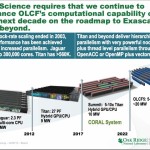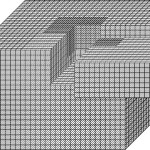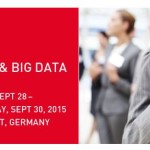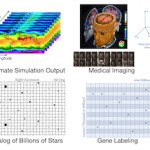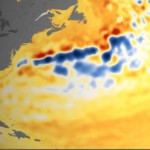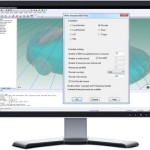In this video from the Barcelona Supercomputer Center, Big Data is presented as a key challenge for researchers studying global climate change. “Changes in the composition of the atmosphere can affect the habitability of the planet by modifying the air quality and altering long-term climate. Research in this area is devoted to the development, implementation and refinement of global and regional state-of-the-art models for short-term air quality forecasting and long-term climate predictions.”
Archives for August 2015
Video: Present and Future Leadership Computers at OLCF
In this video from the 2015 OLCF User Meeting, Buddy Bland from Oak Ridge presents: Present and Future Leadership Computers at OLCF. “As the home of Titan, the fastest supercomputer in the USA, OLCF has an exciting future ahead with the 2017 deployment of the Summit supercomputer. Summit will deliver more than five times the computational performance of Titan’s 18,688 nodes, using only approximately 3,400 nodes when it arrives in 2017.”
GENCI to Collaborate with IBM in Race to Exascale
Today GENCI announced a collaboration with IBM aimed at speeding up the path to exascale computing. “The collaboration, planned to run for at least 18 months, focuses on readying complex scientific applications for systems under development expected to achieve more than 100 petaflops, a solid step forward on the path to exascale. Working closely with supercomputing experts from IBM, GENCI will have access to some of the most advanced high performance computing technologies stemming from the rapidly expanding OpenPOWER ecosystem.”
Arithmetic Intensity of Stencil Operations
Applications that use 3D Finite Difference (3DFD) calculations are numerically intensive and can be optimized quite heavily to take advantage of accelerators that are available in today’s systems. The performance of an implementation can and should be optimized using numerical stencils. Choices made when designing and implementing algorithms can affect the Arithmetic Intensity (AI), which is a measure of how efficient an implementation, by comparing the flops and memory access.
The Price of Open-source Software – a Joint Response
Should all academic software be released as open source by default? “Ultimately, we must accept that research is best served through using a combination of open-source and proprietary software, through developing new software and through the use of existing software. This approach allows the research community to focus on what is optimal for scientific discovery: the one point on which everyone in this debate agrees.”
Video: Stunning Simulation Shows Comet in the Solar Wind
In what has to be one of the most beautiful simulations I’ve ever seen, this video from the European Space Agency shows simulated interaction of solar winds with 67P/Churyumov-Gerasimenko, the famous comet targeted the Rosetta mission. “The simulated conditions represent those expected at 1.3 AU from the Sun, close to perihelion, where the comet is strongly active.”
ISC Cloud & Big Data Conference to Focus on Business, Technology and Research
Early Bird registration rates are now available for ISC Cloud & Big Data Conference, which takes place Sept. 28-30 in Frankfurt, Germany. This year the event will kick off with one full day of workshops. The new program will highlight performance demanding cloud and big data applications and technologies and will consist of three tracks: Business, Technology and Research.
Accelerating Science with SciDB from NERSC
Over at NERSC, Linda Vu writes that the SciDB open source database system is a powerful tool for helping scientists wrangle Big Data. “SciDB is an open source database system designed to store and analyze extremely large array-structured data—like pictures from light sources and telescopes, time-series data collected from sensors, spectral data produced by spectrometers and spectrographs, and graph-like structures that illustrate relationships between entities.”
NASA Charts Sea Level Rise
“Sea level rise is one of the most visible signatures of our changing climate, and rising seas have profound impacts on our nation, our economy and all of humanity,” said Michael Freilich, director of NASA’s Earth Science Division. “By combining space-borne direct measurements of sea level with a host of other measurements from satellites and sensors in the oceans themselves, NASA scientists are not only tracking changes in ocean heights but are also determining the reasons for those changes.”
Rescale Launches Cloud HPC Platform in Europe
Today Rescale announced availability of its Europe region simulation and HPC platforms. As an HPC cloud provider, Rescale offers a software platform and hardware infrastructure for companies to perform scientific and engineering simulations.


